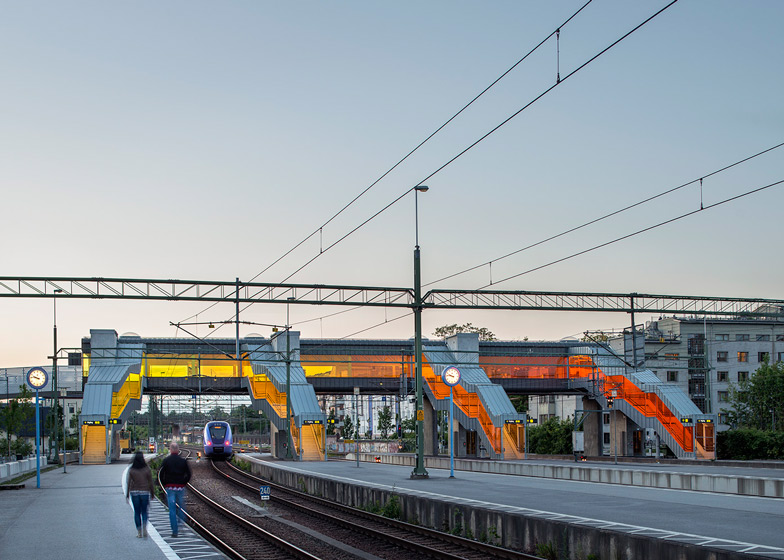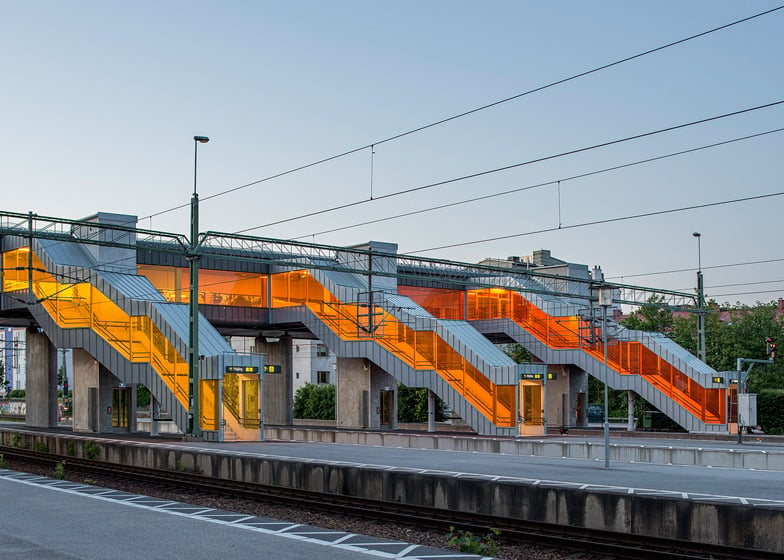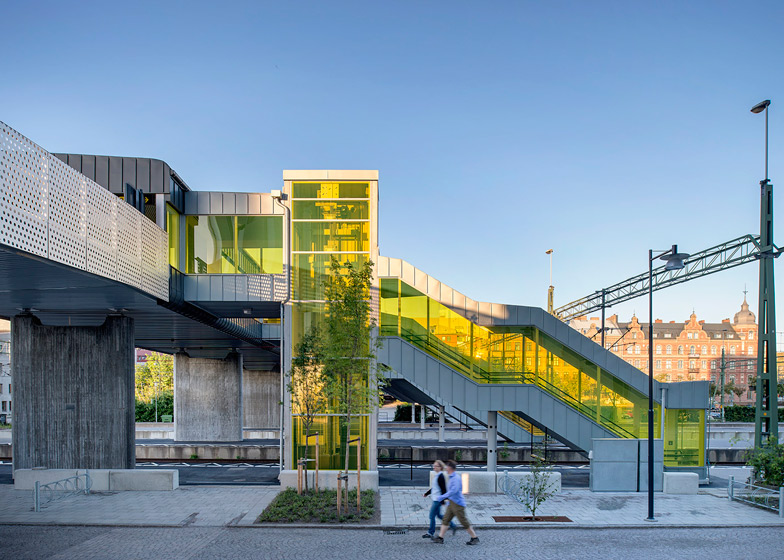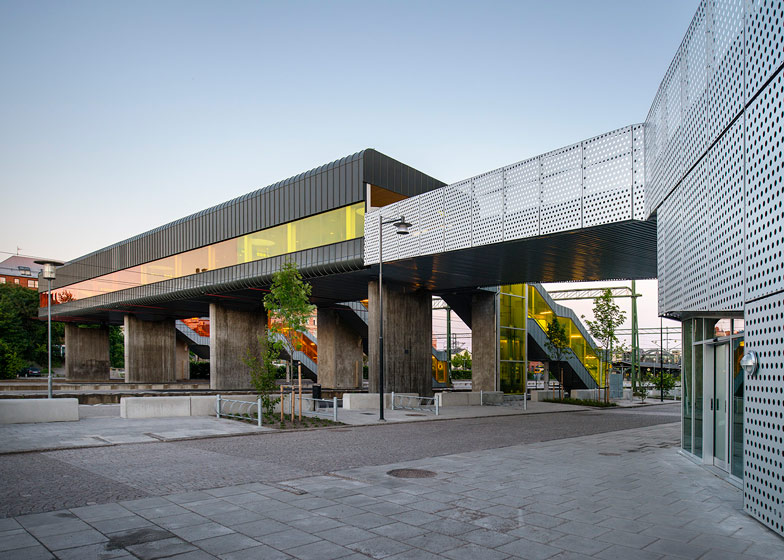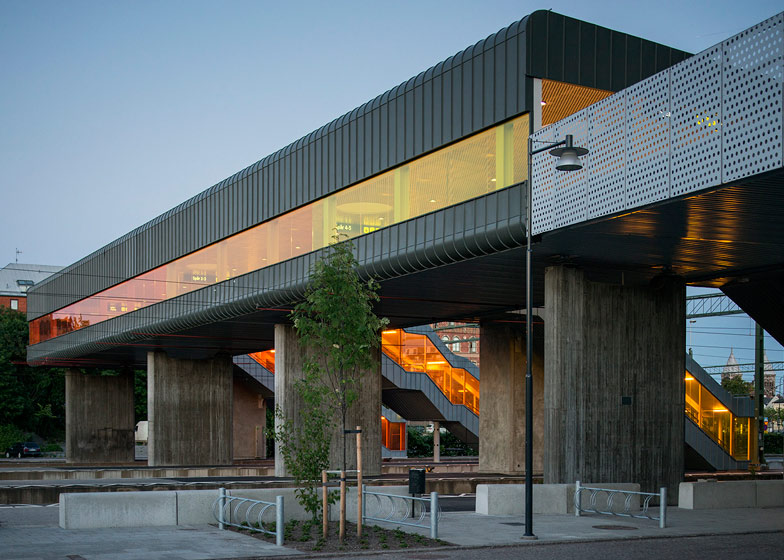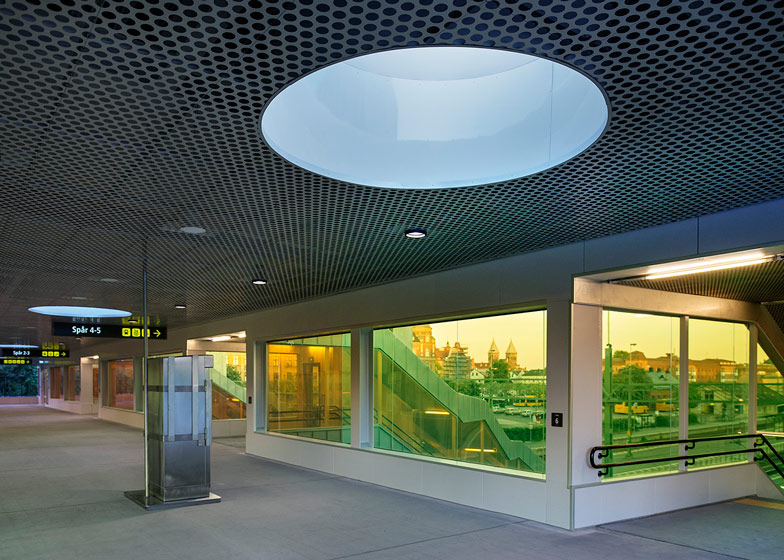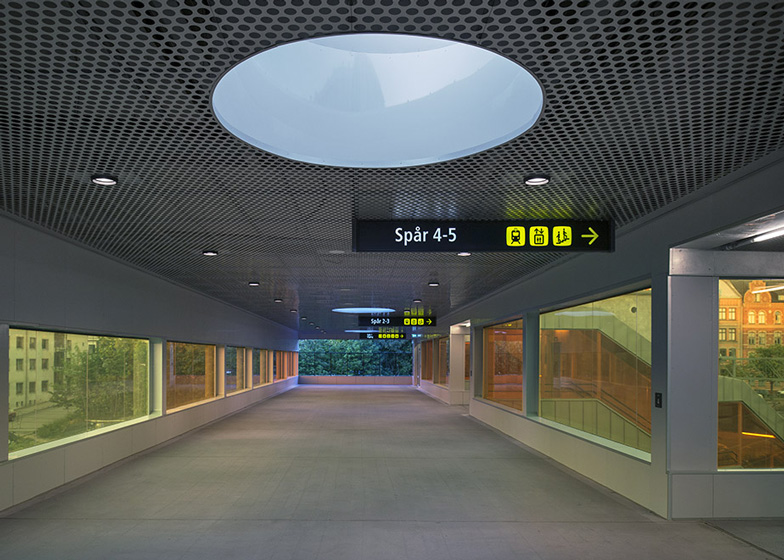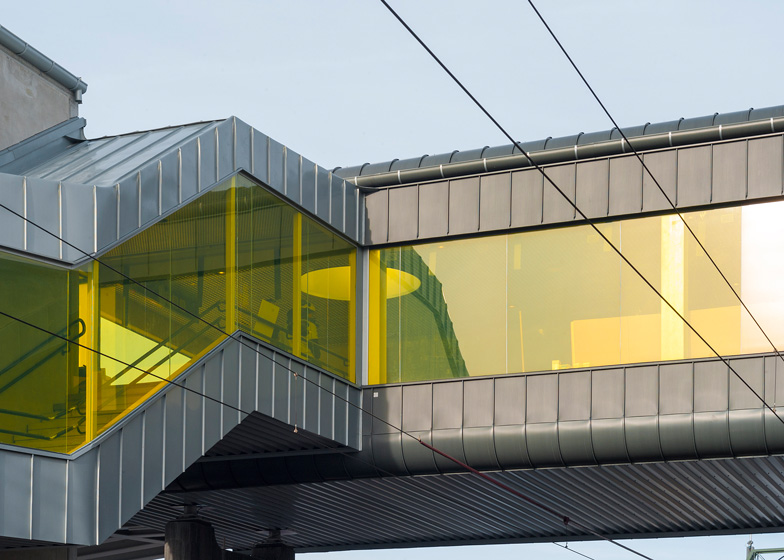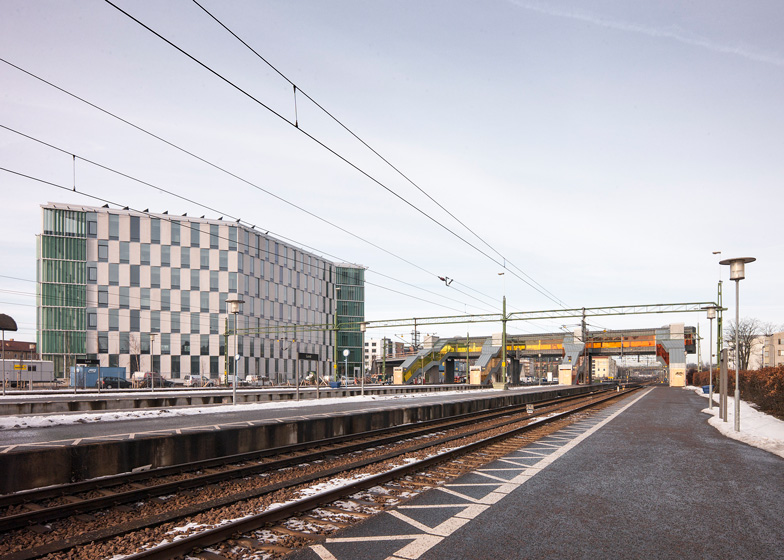Stairs glazed in warm shades of red, orange and yellow lead up from the platforms of a train station in Lund, Sweden, to a new pedestrian bridge by Metro Arkitekter (+ slideshow).
Swedish studio Metro Arkitekter – who previously completed a Copenhagen station with a spotty circular roof and are part of design firm Sweco – designed the Skyttelbron bicycle and pedestrian walkway for the Lund Central railway station.
As an addition to an existing underground passageway and open-air bridge, the walkway connects the New City Hall on one side of the station to the city centre of Lund on the other side of the tracks.
As part of the brief, the architects worked to incorporate colour into the build to contrast with the more neutral surroundings.
They installed panes of glass in sunset shades on the sides of the stairs and along the bridge, which function as stained-glass windows.
"The first idea, and perhaps the strongest in terms of design, is that we wanted to bring colour into an environment where virtually everything is in shades of grey, brown or green," architect Rafael Palomo told Dezeen.
Connecting with the existing bridge, the new walkway and stairwells were constructed using both concrete and a lightweight zinc and titanium alloy – a material that can withstand the harsh Swedish winters and will be easy to maintain.
Four stairwells step down to the platforms in increments, giving them their zigzagging profiles. Each one also wraps a concrete elevator shaft, which gives cyclists access to the bicycle pathway.
"We wanted to work with the stairs in a sculptural way and decrease the sense of height between the platforms and the bridge," Palomo explained.
Thin concrete stands support the walkway, leaving space around them for pedestrians to access the platforms.
Circular skylights perforate the roof of the bridge, helping to illuminate the walkway during the day, while a series of spotlights brighten the space at night.
Photography is by Felix Gerlach, apart from where otherwise indicated.
Here's from more text from Metro Arkitekter:
Skyttelbron, Lund, Sweden
Skyttelbron is a bicycle and pedestrian bridge over the railway tracks in Lund Central Station. There were already two connections between the west and east side of the railroad tracks. The first, on the south of the station area, is an underground passage, the so-called "Ryde's passage." The second, further north in height with Clemenstorget, is an open bridge. So Skyttelbron would be the third connection. This then becomes a closure of the station area to the north and will also connect the New City Hall to the centre of Lund.
The first idea, and perhaps the strongest in terms of design is that we wanted to bring colour in an environment where virtually everything is in shades of grey, brown or green. We chose to work with warm colours and made it pretty easy for us by providing a colour to each stair and platform. 4 stairs = 4 colours. The colour is seen from the outside but also affects how one looks at the environment and acts as a filter for the light.
A simple design. We wanted to keep the design together with a simple shape, while we wanted to use as few materials as possible. Coloured glass, concrete and Rheinzink titanium zinc in two different shades.
As for the stairs so we had to think hard because the bridge is where the platforms ends. This in practice means that the width decreases. The stairs are portrayed to twist around the elevators. They thus become more sculptural while they break down the sense of the difference in height (over 6 meters).
The challenge in this project was not in its complexity and coordination between all involved . The challenge was mainly that the conformation we developed together with the municipality would survive the coming detailed design with all requirements of the Transport Administration in this type of project.
The choice of roofing materials we made was based on a few different aspects.We wanted a material that would be aesthetically attractive and complementary and contrasting to the coloured glasses. We had a limited budget, which is nothing special. But the interesting thing here was that we already from the start had a dialogue with the client (Municipality of Lund) on budget and what costs were reasonable for which parts. A requirement from the client was that the project budget would not exceed 36 million SEK in total.
Titanium Zinc would withstand the harsh environment and need non or very limited maintenance. This aspect came into the process early, even in conceptual phase. From an environmental perspective, the client wanted to be sure that the materials we chose would meet their and the Administration environmental requirements.
It should be easy to build, because the bridge would be built alongside the tracks and then moved and assembled on site at night over a couple of weekends. The facade should also be lightweight since we did not want to add large loads to the steel structure.
As for constructive solutions, they are very simple. Band coverage rooftop, wheel cover on facades with double folding in both cases in order to get a dense outer shell. Then there is the solid craftsmanship. The only part that required some research from Rheinzink page along with the tinsmiths was the rounding of the corners. We wanted the facade and the roof to hang together. It took some time and care to find a solution where rounding, gutter and stair ceiling worked together.

